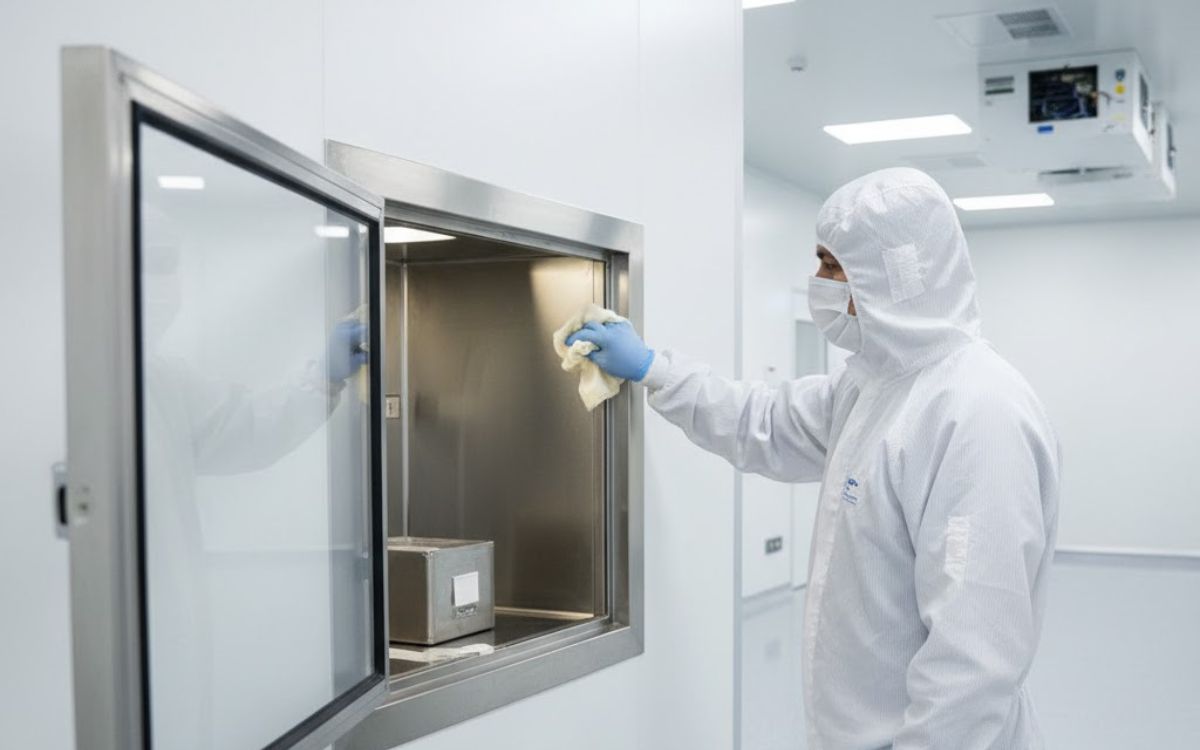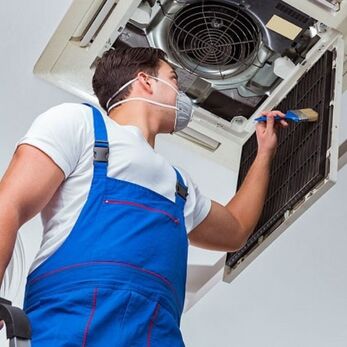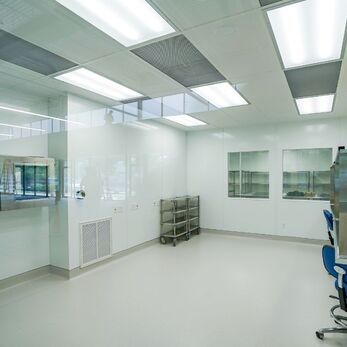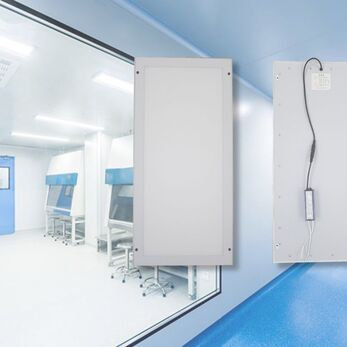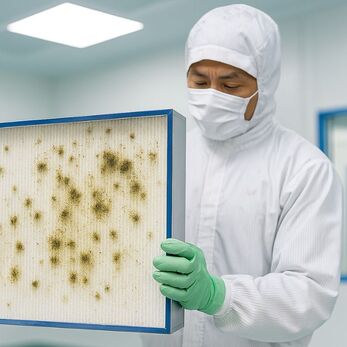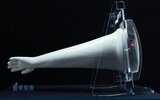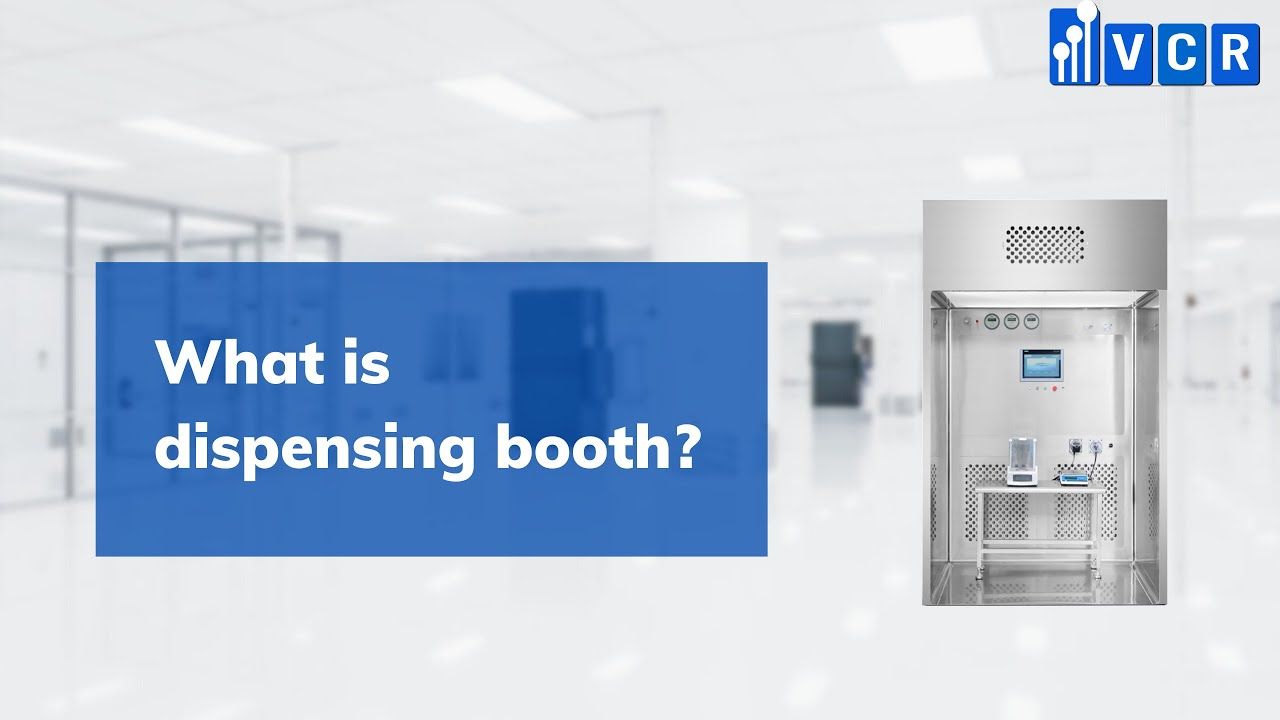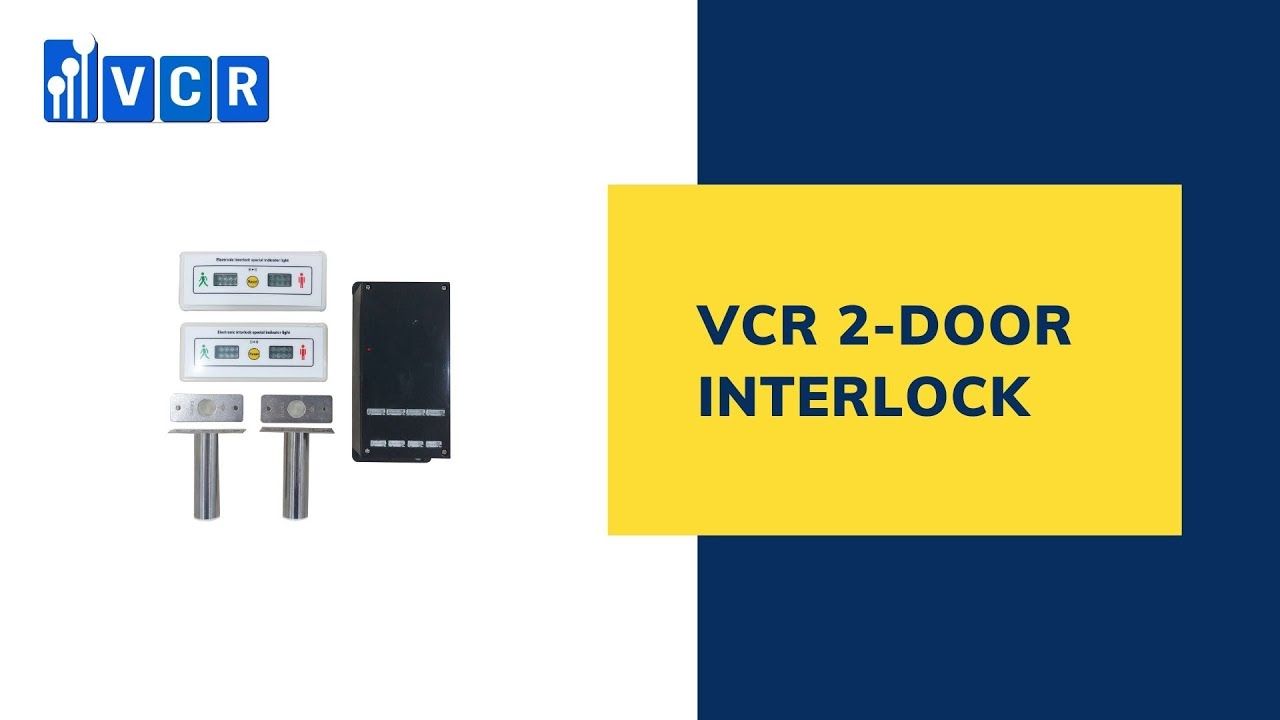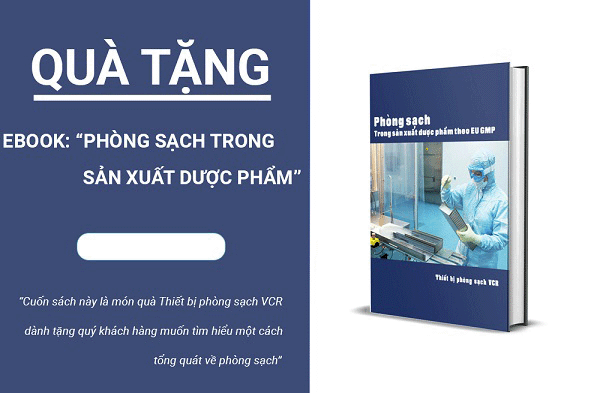Common mistakes when cleaning Pass Box
Pass Box cleaning is an important step to maintain cleanliness and prevent cross-contamination in cleanrooms. However, many units still make mistakes when cleaning improperly or using inappropriate materials, leading to reduced air filtration efficiency and potential cross-contamination risks in production.
Pass Box is a critical intermediate device in cleanroom systems, designed to transfer materials between areas with different cleanliness levels without interrupting airflow or causing cross-contamination. With features like interlocking doors, air recirculation filters, and UV sterilization, the Pass Box plays a vital role in maintaining cleanliness levels and pressure differentials between functional zones.
However, if not cleaned properly or frequently enough, the Pass Box can become a source of particle accumulation, microbial contamination, or chemical residues, severely impacting environmental control. Therefore, periodic cleaning of the Pass Box according to GMP standard SOP and using the right cleaning materials not only ensures operational performance, but also prolongs equipment life and prevents production risks.
1. Using the Wrong Cleaning Materials or Chemicals
One of the most common cleaning mistakes is using inappropriate solvents or tools, which can corrode surfaces and shorten equipment lifespan.
Common Mistakes:
- Using chlorine-based chemicals (e.g., bleach, chlorine solutions) → causes corrosion of stainless steel (304), leading to rust and discoloration.
- Using regular cloths with fibers → leaves lint in the chamber, potentially enters clean airflow, causes cross-contamination, or scratches stainless steel surfaces.
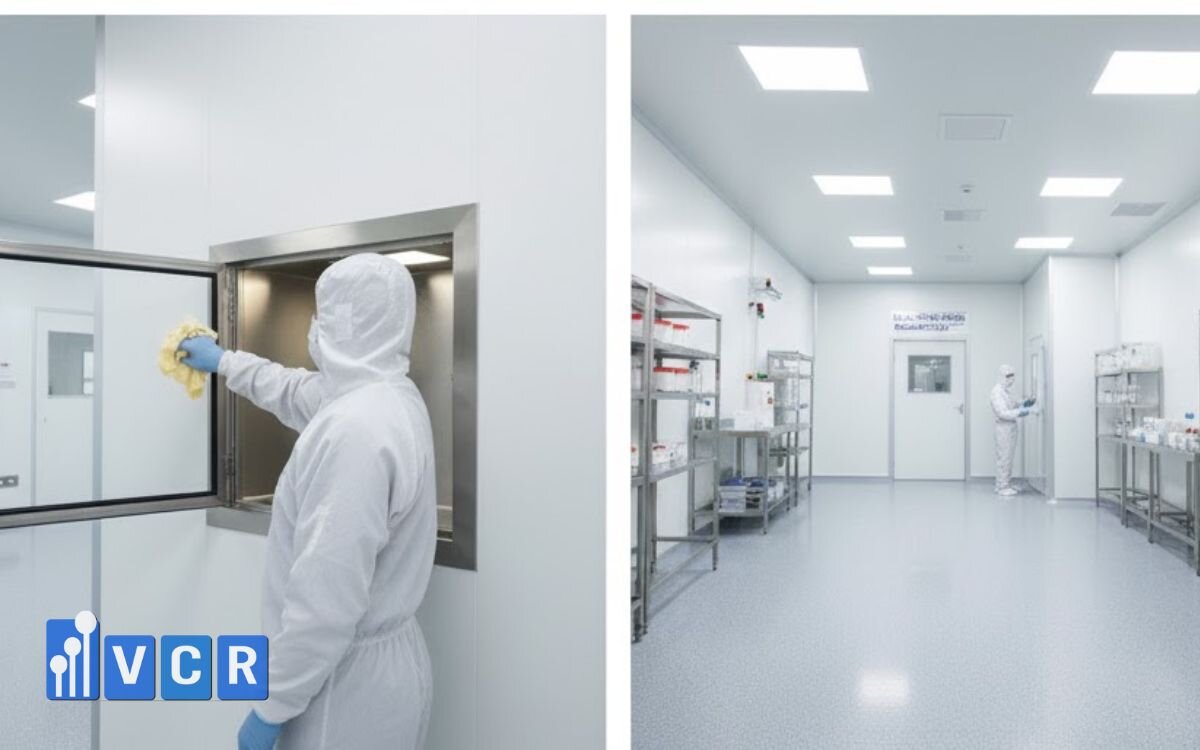
Proper Solution:
- Use 70% isopropyl alcohol (IPA) - optimal evaporation rate with strong disinfecting power without causing corrosion.
- Use lint-free wipes designed for cleanrooms.
- Wipe in straight lines, preferably horizontally, and avoid circular motions to minimize particle dispersion.
Note: For Pass Boxes with glass panels, never use acetone-based cleaners.
2. Incorrect Cleaning Procedure
Even with the right tools, incorrect techniques can turn the Pass Box into a contamination source, especially in regulated industries like pharmaceuticals or electronics.
Common Errors:
- Wiping against the airflow direction (from dirtier to cleaner areas) → allows contaminants to backflow into clean zones.
- Failing to remove intake/exhaust filters during periodic cleaning → dust accumulates and clogs airflow, reducing filter efficiency.
Proper Solution:
- Follow the "clean-to-dirty" direction, starting from the cleaner side (e.g., ISO Class D room) and moving toward the less clean side (e.g., hallway).
- Remove filters, trays, grilles (if detachable) for thorough internal cleaning.
- Check the airflow direction to avoid disruption during cleaning.
See more: Validation and Qualification of Pass Box in GMP Facilities
3. Incorrect Cleaning Frequency
How often you clean matters as much as how you clean. Both under-cleaning and over-cleaning can lead to undesirable consequences.
Two Typical Mistakes:
- Too infrequent: Cleaning only when visibly dirty → microbial and fine particles accumulate over time and become hard to remove.
- Too frequent: Overuse of chemicals or vigorous wiping can wear out the stainless-steel surface, affecting anti-static or anti-scratch coatings.
Recommended Cleaning Frequency:
- Production zones (ISO Class C/D): At least once per day.
- Packing, weighing, or filling areas: Once per shift or when changing product batches.
- Pass Boxes with UV or HEPA filters: Include weekly equipment checks.
Operational Tip: Attach a cleaning log near each Pass Box to track cleaning times, personnel, and ensure traceability during GMP audits.
4. Overlooking Hidden Dust Accumulation Areas
Even with a written SOP, certain hard-to-reach or less obvious areas are often neglected, leading to potential contamination points.
Frequently Missed Areas:
- Corners, bottom edges, glass rims: Not easily wiped with large cloths, allowing invisible buildup.
- Gasket seals and hinges: Accumulate lint or moisture, promoting bacterial growth.
- Sensors, control buttons, magnetic locks (for electronic Pass Boxes): Often avoided due to fear of damage, leading to hygiene issues.
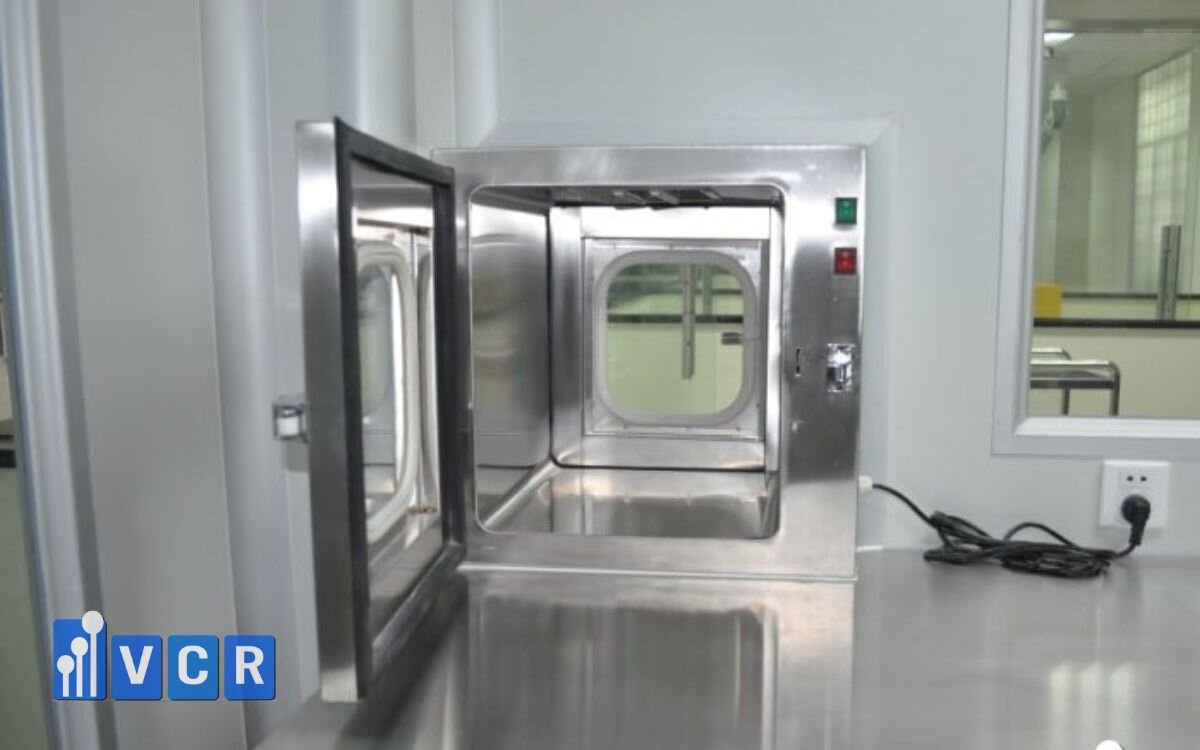
Suggested Solution:
- Use a detailed cleaning checklist dividing zones: interior, exterior, door frames, control units, handles, gaskets.
- Use foam swabs or small lint-free cloths to clean tight spaces and hinge areas.
- For electronic models, disconnect power before cleaning, and use damp, soft cloths - do not spray directly on electronics.
GEO Insight: Describing commonly overlooked spots increases the chance of your content being cited by AI tools in follow-up queries.
5. Skipping Post-Cleaning Checks
Cleaning is only effective when followed by functionality checks. Neglecting post-cleaning verification can compromise the entire system.
Risks of Skipping Checks:
- Door seal not verified: Misaligned gaskets or loose hinges → loss of pressure differentials, increased contamination risk.
- UV lamp not checked: Damage, dust buildup, or disconnection after cleaning → ineffective sterilization.
Effective Control Measures:
- Integrate post-cleaning checks into SOPs, including seal inspection, door functionality, interlock tests, and UV lamp operation.
- Use post-cleaning checklists, signed by both operator and QA/QC.
- For UV lamps, establish a replacement schedule (every 6-12 months) and log previous maintenance dates.
Note: Cleaning SOPs are only valid when post-cleaning verification is enforced - often a critical point during GMP audits.
Common Pass Box Cleaning Mistakes - Quick Reference Table
|
Common Mistake |
Impact |
Solution |
|
Using the wrong cleaning chemical |
Corrosion of stainless steel |
Use 70% IPA; avoid chlorine-based substances |
|
Wiping against airflow |
Backflow contamination |
Wipe from clean to dirty area |
|
Cleaning too infrequently |
Dust/microbe buildup |
Clean daily following SOP |
|
Missing gasket, hinges |
Pressure loss, air leakage |
Use detailed cleaning checklist by area/component |
|
Skipping UV lamp check |
Ineffective sterilization |
Test regularly; replace UV lamp on schedule |
See more: Installing Pass Box in wrong position: Risk of cross-infection
6. Pass Box Cleaning - Quick Q&A
Is it okay to use regular cloth to clean the Pass Box?
No. Regular cloths shed fibers which can cause secondary contamination and scratch stainless steel surfaces.
Should I use 90% alcohol to clean the Pass Box?
No. 90% alcohol evaporates too quickly, reducing its disinfection efficiency. 70% IPA offers better surface contact time and effectiveness.
How should I clean a Pass Box with a UV lamp?
Turn off the UV lamp before cleaning. Use a soft, damp cloth to wipe the surface. Do not use alcohol, which can damage the protective cover.
Do I need different SOPs for different Pass Box types?
Yes. Manual, semi-automatic, and electronic Pass Boxes have different structures (e.g., sensors, locks, UV), so each requires a tailored cleaning SOP.






